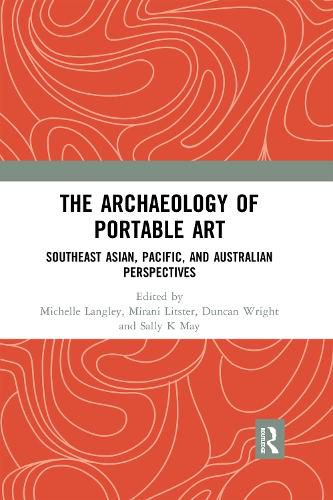Readings Newsletter
Become a Readings Member to make your shopping experience even easier.
Sign in or sign up for free!
You’re not far away from qualifying for FREE standard shipping within Australia
You’ve qualified for FREE standard shipping within Australia
The cart is loading…






The development of complex cultural behaviour in our own species is perhaps the most significant research issue in modern archaeology. Until recently, it was believed that our capacity for language and art only developed after some of our ancestors reached Europe around 40,000 years ago. Archaeological discoveries in Africa now show that modern humans were practicing symbolic behaviours prior to their dispersal from that continent, and more recent discoveries in Indonesia and Australia are once again challenging ideas about human cultural development.
Despite these significant discoveries and exciting potentials, there is a curious absence of published information about Asia-Pacific region, and consequently, global narratives of our most celebrated cognitive accomplishment - art - has consistently underrepresented the contribution of Southeast Asia, Australia, and the Pacific Islands. This volume provides the first outline of what this region has to offer to the world of art in archaeology.
Readers undertaking tertiary archaeology courses interested in the art of the Asia-Pacific region or human behavioural evolution, along with anyone who is fascinated by the development of our modern ability to decorate ourselves and our world, should find this book a good addition to their library.
$9.00 standard shipping within Australia
FREE standard shipping within Australia for orders over $100.00
Express & International shipping calculated at checkout
The development of complex cultural behaviour in our own species is perhaps the most significant research issue in modern archaeology. Until recently, it was believed that our capacity for language and art only developed after some of our ancestors reached Europe around 40,000 years ago. Archaeological discoveries in Africa now show that modern humans were practicing symbolic behaviours prior to their dispersal from that continent, and more recent discoveries in Indonesia and Australia are once again challenging ideas about human cultural development.
Despite these significant discoveries and exciting potentials, there is a curious absence of published information about Asia-Pacific region, and consequently, global narratives of our most celebrated cognitive accomplishment - art - has consistently underrepresented the contribution of Southeast Asia, Australia, and the Pacific Islands. This volume provides the first outline of what this region has to offer to the world of art in archaeology.
Readers undertaking tertiary archaeology courses interested in the art of the Asia-Pacific region or human behavioural evolution, along with anyone who is fascinated by the development of our modern ability to decorate ourselves and our world, should find this book a good addition to their library.